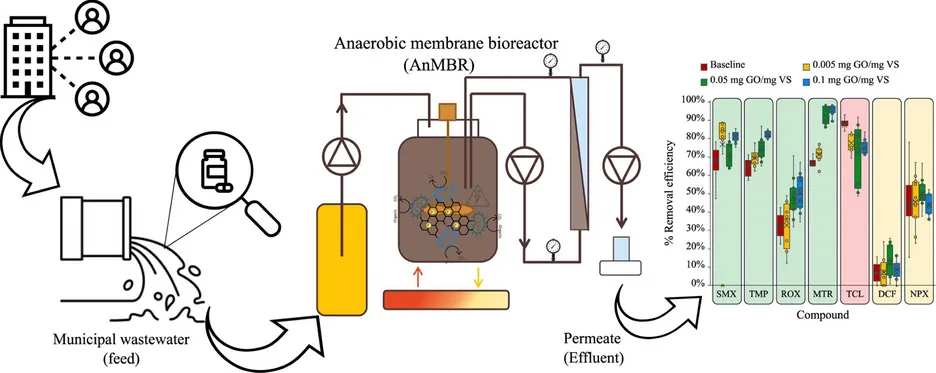The addition of conductive materials to the anaerobic digestion bioreactor was suggested to enhance microbial activity. In the present work, an anaerobic membrane bioreactor treating municipal wastewater was operated for 385 days. The impact of different graphene oxide concentrations on the removal target pharmaceuticals and microbial community dynamics was investigated. The addition of graphene oxide did not impact the reactor stability, whereas the removals of antibiotics (e.g., trimethoprim and metronidazole) were enhanced. A shift in the microbial community was detected after the addition of 50–900 mg L-1 of graphene oxide, with the proliferation hydrogenotrophic methanogens. The proliferation of syntrophic microorganisms may indicate interactions via direct interspecific electron transfer. The obtained results suggest that the addition of graphene oxide at low mg L-1 concentrations to an anaerobic membrane bioreactor may be considered to improve the removal of antibiotics from municipal wastewater.
